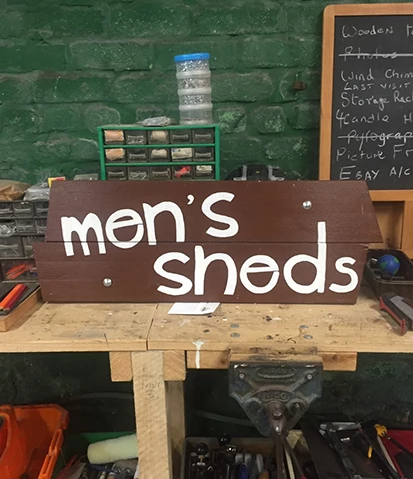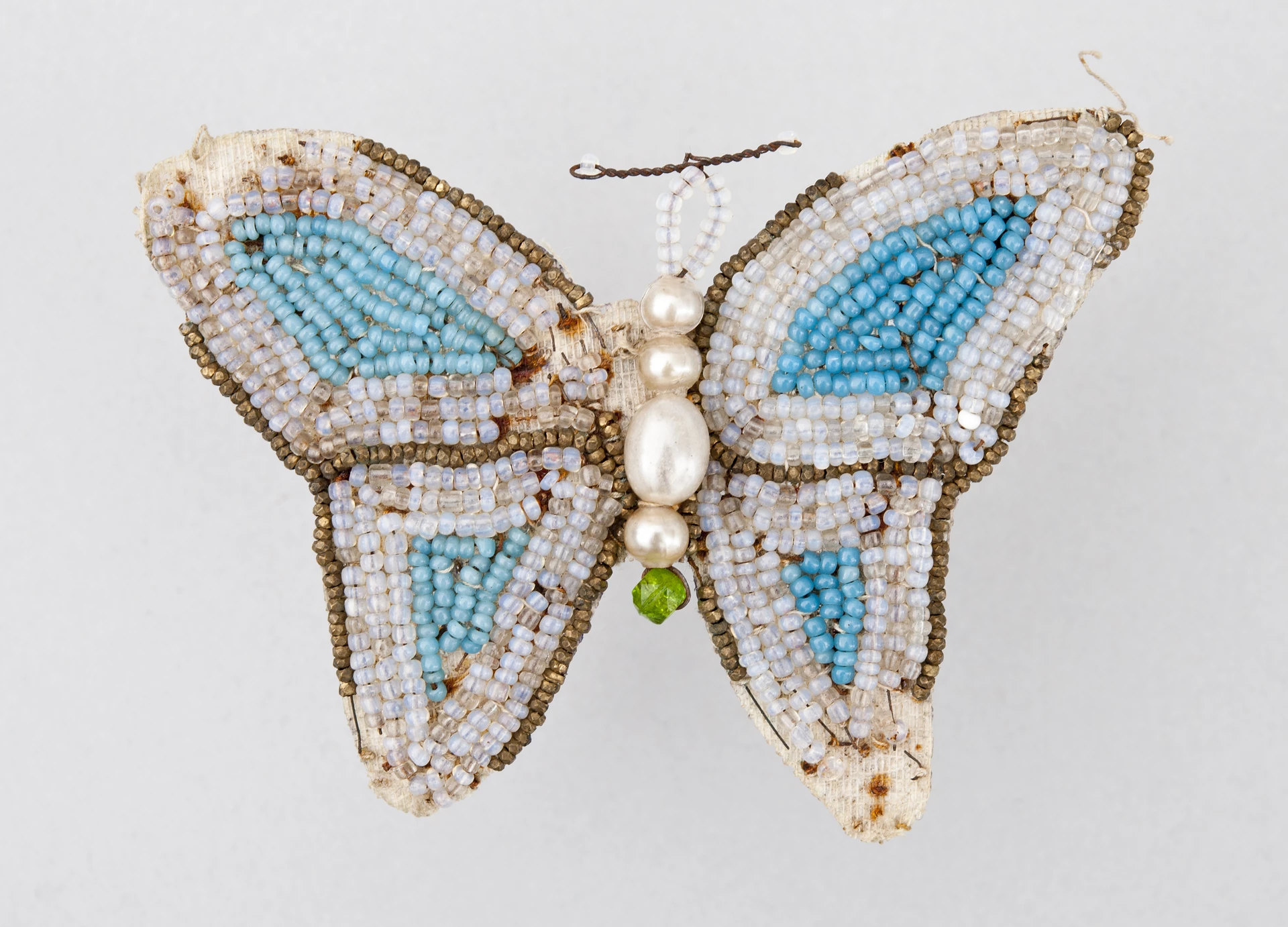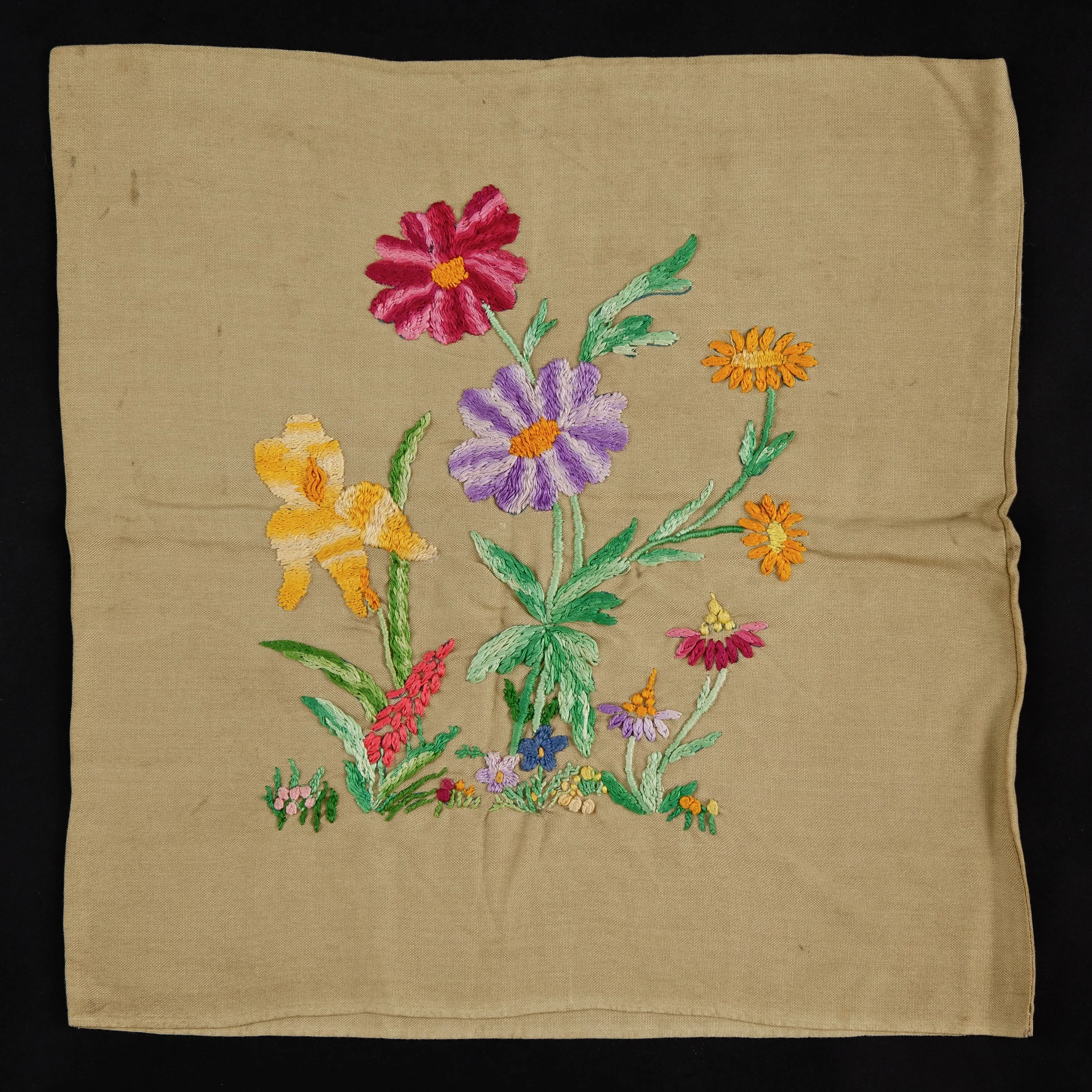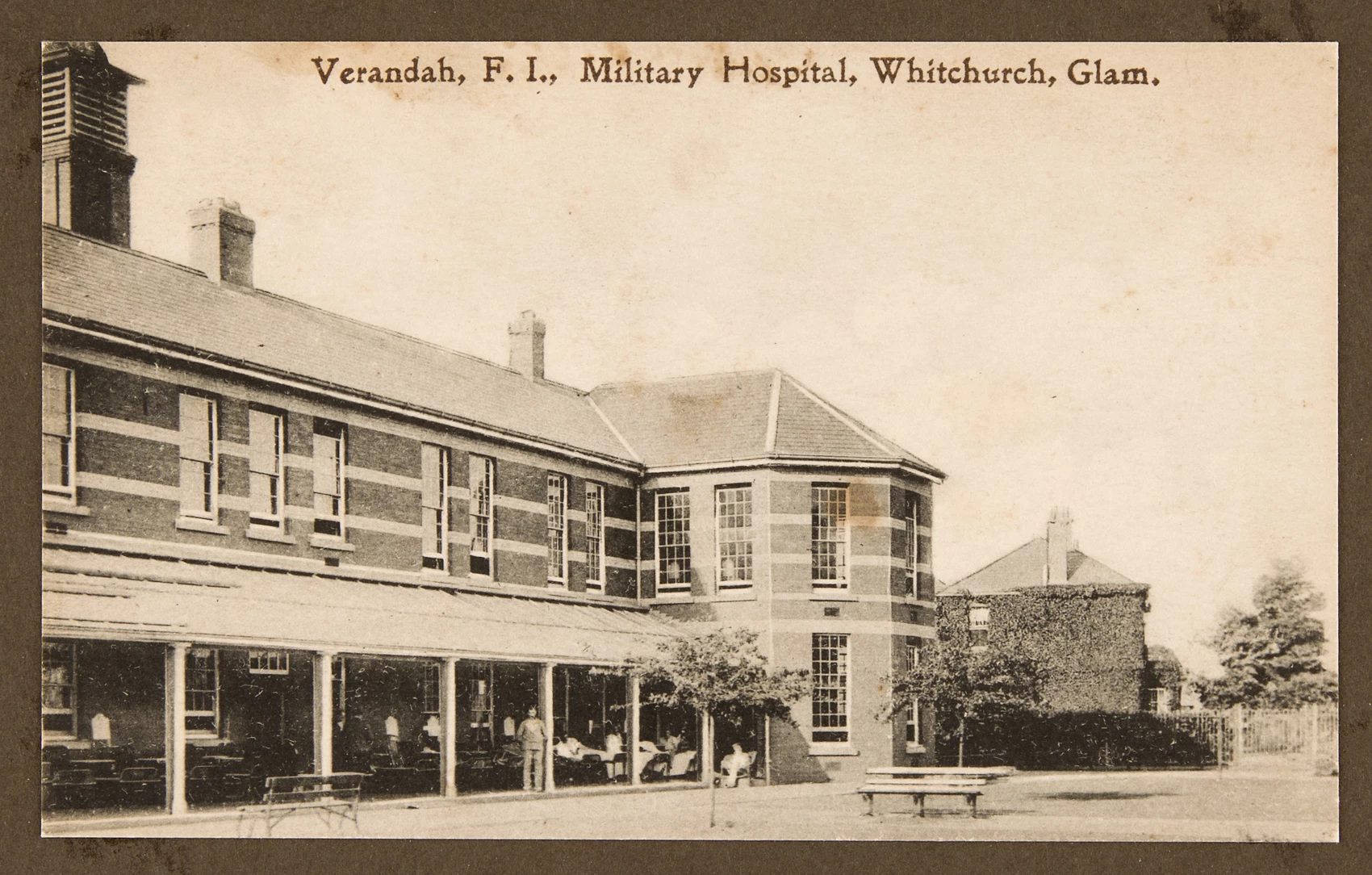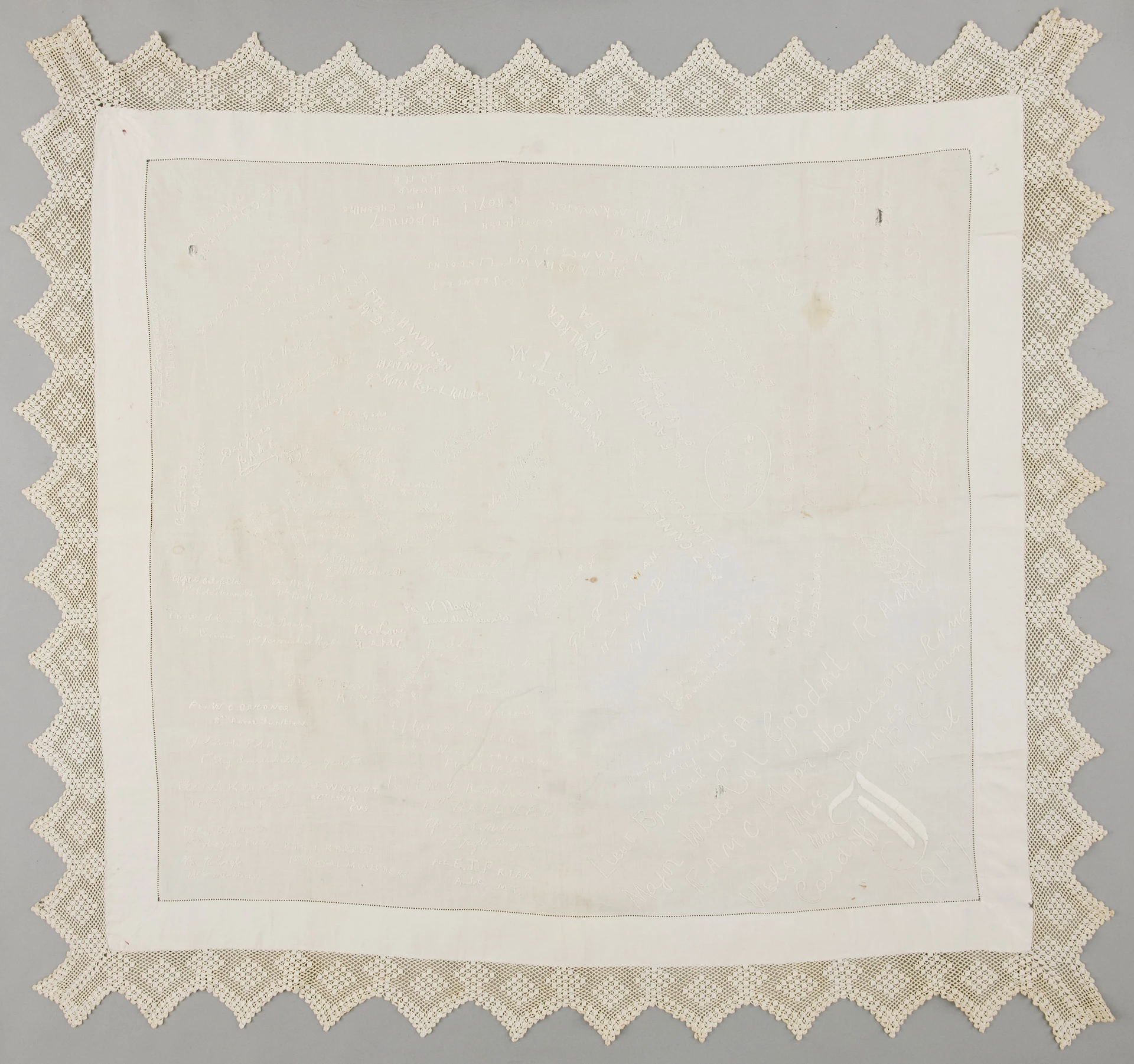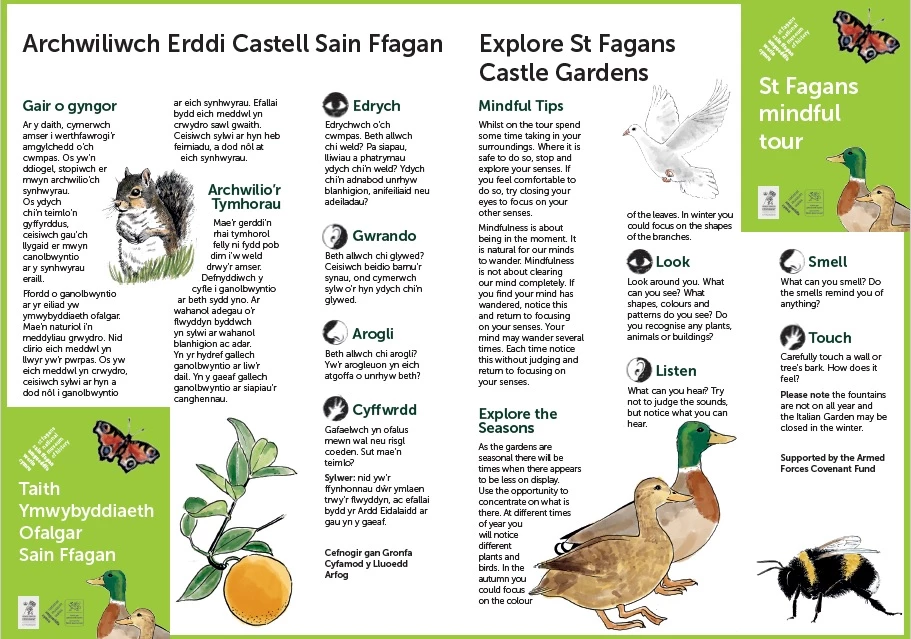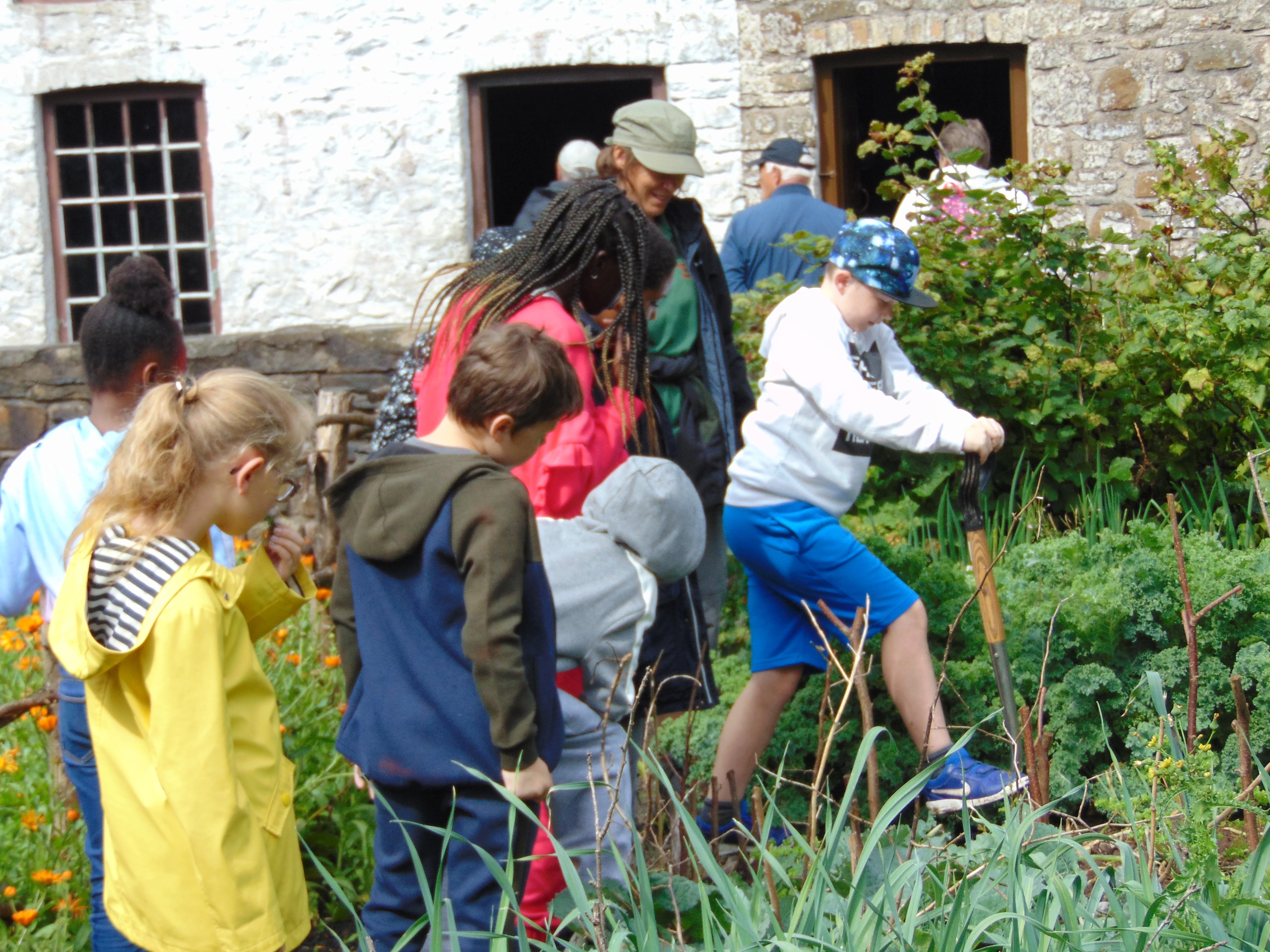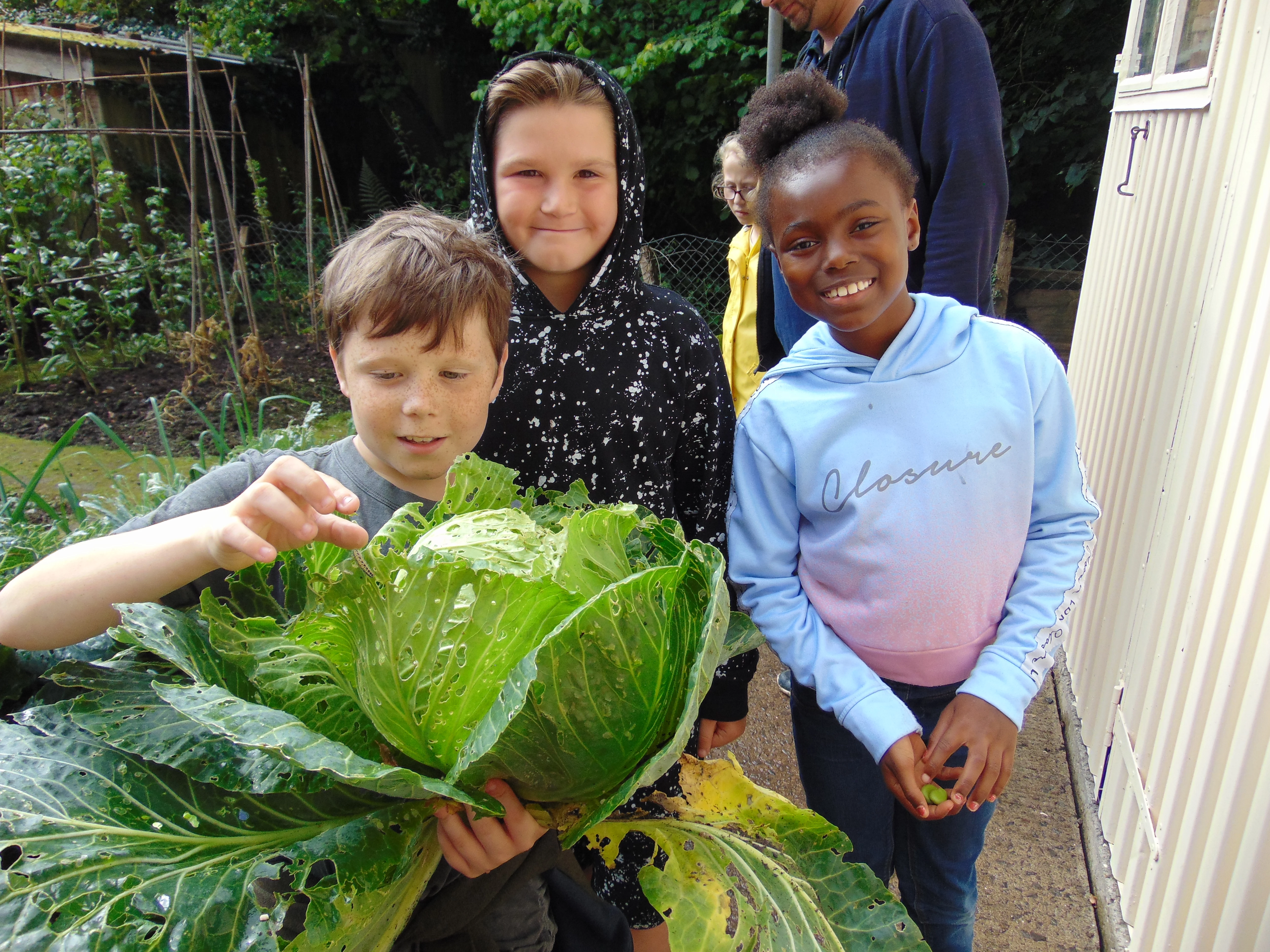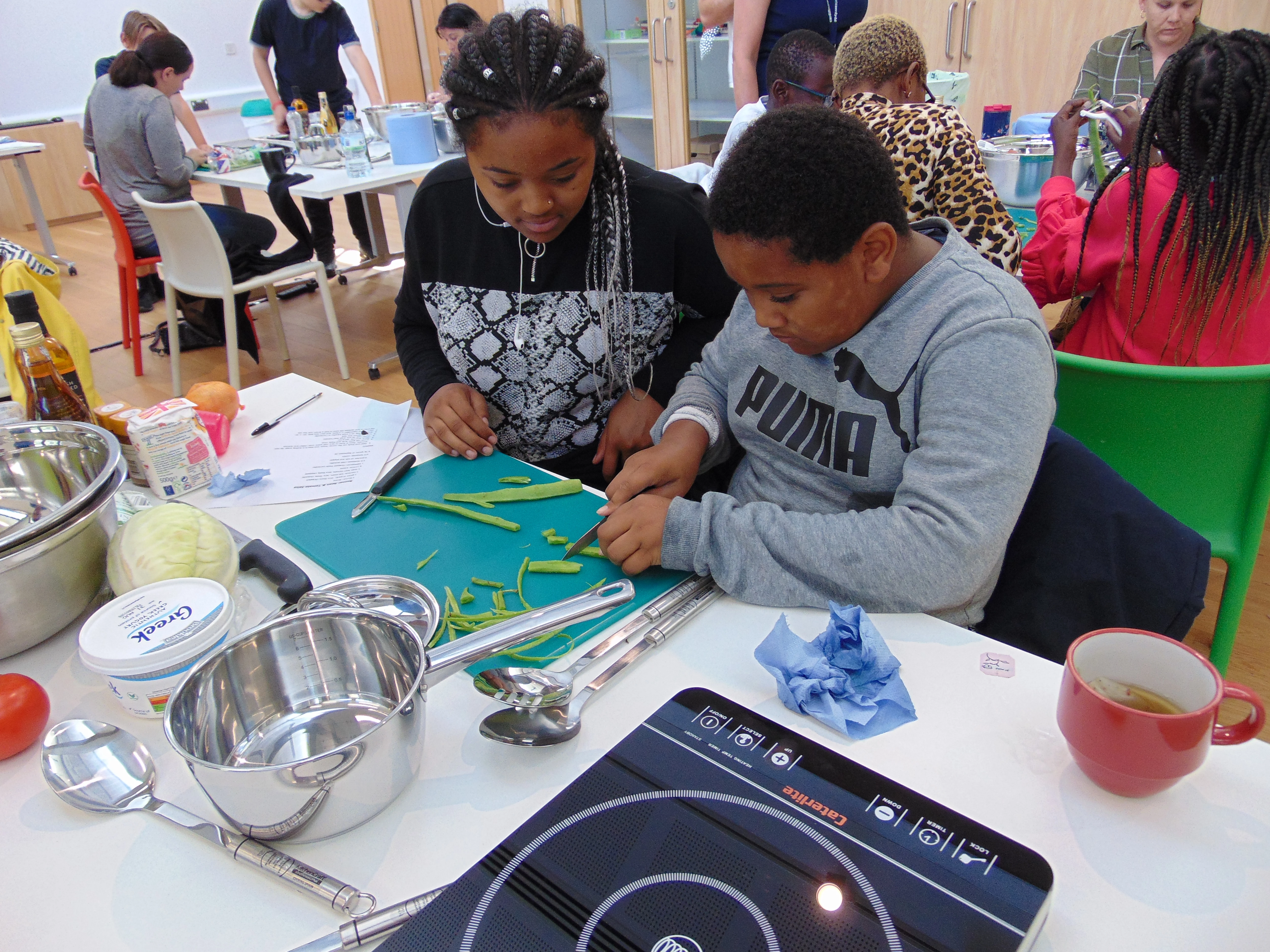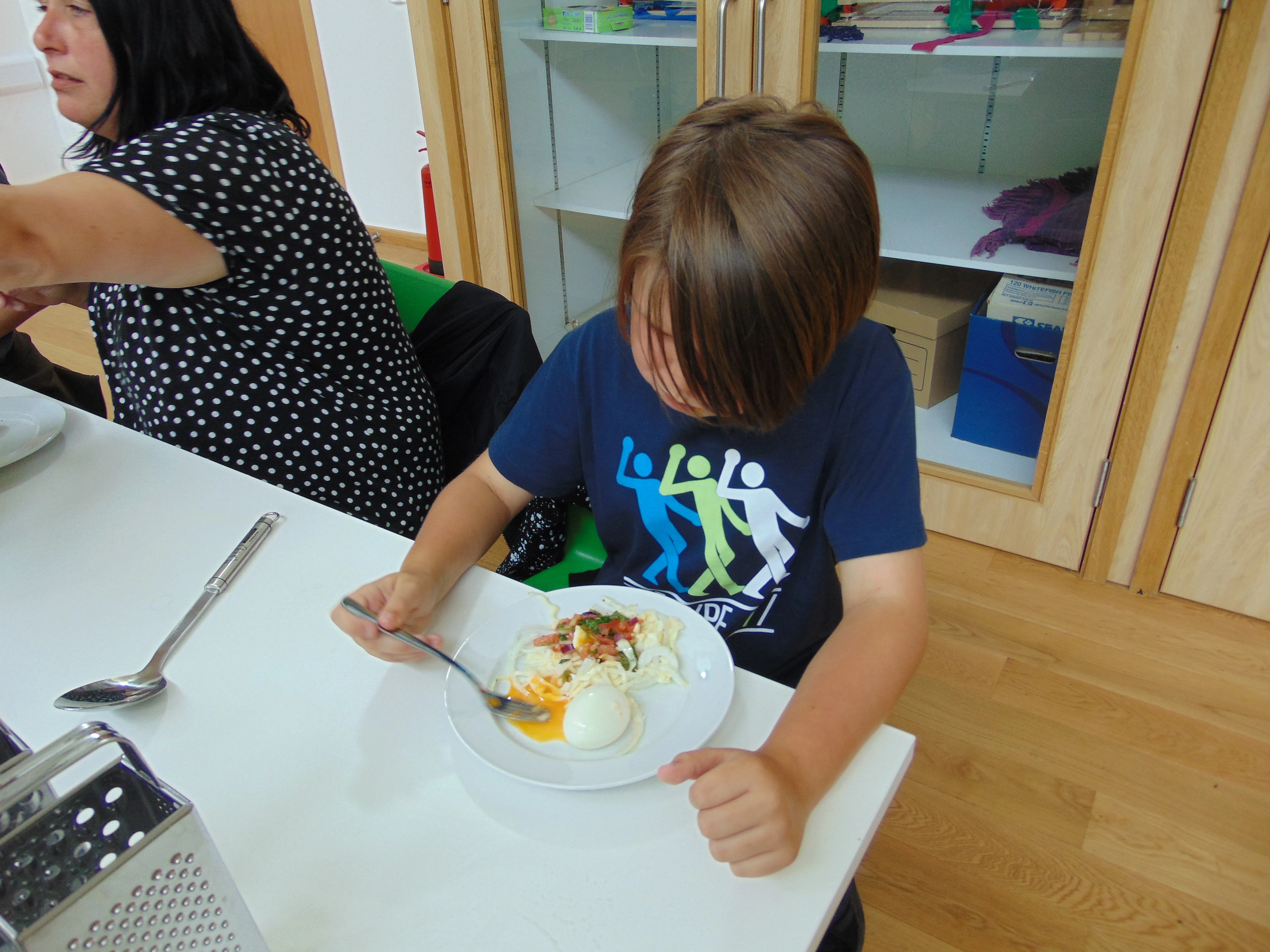Ym mis Awst fe groesawon ni deuluoedd o Gymdeithas Tai Taf yn Nhreganna ac Ysgol Gynradd Herbert Thompson yn Nhrelái (SHEP, Rhaglen Gwella’r Gwyliau Haf ‘Bwyd a Hwyl’) i Sain Ffagan i ymuno â ni ar gwrs garddio a choginio newydd i’r teulu, fel rhan o’r rhaglen addysg i deuluoedd sy’n cefnogi cynllun Cyfuno a’n hymrwymiadau o dan Deddf Llesiant Cenedlaethau’r Dyfodol. Cafodd y rhaglen ei datblygu a’i chynnal mewn partneriaeth ag adran Ehangu Mynediad Prifysgol Fetropolitan Caerdydd a First Campus. Cafodd y teuluoedd gyfle i fwynhau diwrnod o ddysgu yn ymarferol am dyfu bwyd a’i gynaeafu, cyn coginio pryd maethlon gyda chynnyrch wedi’i hel o erddi Sain Ffagan.
Roedd hon yn fenter newydd i ni, ac wedi gweithio allan sut i osod cegin dros dro yn un o’r stiwdios, a chael gafael ar yr holl gyfarpar, roedden ni’n barod amdani.
Mae gerddi Sain Ffagan yn llawn cynnyrch gwych adeg yma’r flwyddyn – ffrwythau, llysiau a pherlysiau – llawer ohonynt yn fathau treftadaeth arbenigol. Fel arfer, caiff cnydau eu harbed a’r hadau eu cynaeafu er mwyn ailblannu’r flwyddyn wedyn, fel rhan o ymchwil parhaus i gnydau treftadaeth. Fodd bynnag, cafodd y teuluoedd fu’n cymryd rhan gyfle i archwilio’r gerddi gyda Juliet Hodgkiss, Uwch Guradur Gerddi. Bu Juliet yn eu dysgu am dyfu a chynhyrchu bwyd, cyn cynaeafu peth o’r cynnyrch i’w ddefnyddio yn y gegin. Ar ôl hel ffa dringo, bresych, shibwns a pherlysiau, roedd hi’n amser mynd nôl i’r dosbarth.
Yno roedd Dean Way, darlithydd mewn Rheoli Lletygarwch ym Mhrifysgol Metropolitan Caerdydd, wrth law i helpu’r teuluoedd i greu pryd hyfryd gyda’r cynnyrch. Dyma beth goginiodd y grwpiau talentog, gan ddilyn ryseitiau Dean:
Colslo Bresych a Ffenigl
½ fresychen fach wedi’i rhwygo
1 bwlb ffenigl, wedi’i dorri’n chwarteri a’i gratio
1 winwnsyn gwyn, wedi’i dorri’n denau
50g iogwrt
1 llwy fwrdd o finegr gwin gwyn
1 llwy fwrdd o siwgr mân
Halen a phupur
Dull
- Torrwch y fresychen yn ei hanner, ac yna yn ei chwarter a thynnwch y canol. Yna, gyda chyllell finiog torrwch y fresychen yn stribedi tenau.
- Torrwch y bwlb ffenigl yn chwarteri a thynnu’r coesyn – yna gratiwch gyda gratiwr bras.
- Pliciwch winwnsyn gwyn a’i dorri’n denau.
- Rhowch yr holl lysiau mewn powlen, a’u cymysgu’n dda. Cymysgwch yr iogwrt, y finegr a’r siwgr i’r llysiau, ac ychwanegwch ddigon o bupur du ac ychydig o halen. Gallwch gadw’r colslo wedi’i selio mewn oergell am hyd at ddau/dri diwrnod.
- I’w weini gydag wyau wedi’u berwi.
Salsa ffa dringo a thomato
3 coden ffa dringo
1 clof o garlleg, wedi’i dorri’n fân
1 winwnsyn coch canolig, wedi’i dorri’n fân
1 tomato mawr, wedi’i dorri’n fân
Sudd hanner lemon
1 llwy de o goriander ffres wedi’i dorri
½ llwy de o bowdr chilli
3 pinsiad o halen a phupur
½ llwy de o gwmin
4 llwy fwrdd o olew hâd rêp
Dull
- Pliciwch a thorrwch y ffa dringo’n fach a’u berwi’n sydyn mewn dŵr berwedig am ddau funud. Rhowch nhw mewn powlen o ddŵr oer nes maen nhw wedi oeri.
- Gwasgwch un clof garlleg a’i dorri’n fân.
- Torrwch un winwnsyn coch yn fach iawn.
- Torrwch un tomato mawr yn fân.
- Torrwch un lemon yn ei hanner
- Torrwch lond llaw o goriander yn fân
- Rhowch yr holl lysiau mewn powlen, a’u cymysgu’n dda. Cymysgwch yr HOLL gynhwysion a gwasgwch y sudd allan o hanner lemon mewn i’r gymysgedd.
Ar ôl y sesiwn goginio bu Dean yn rhoi gwybodaeth ddiddorol i’r grwpiau ar fwyta’n iach, gan edrych yn agos ar y braster a’r siwgr sy’n cuddio mewn cymaint o fwyd! Edrychwch ar y labeli golau traffig ar becynnau bwyd sy’n dangos os yw bwyd yn uchel (coch), canolig (oren) neu’n isel (gwyrdd) mewn braster, braster dirlawn, siwgr a halen. (NHS online: reference intakes explained)
Cwrs peilot oedd hwn, ac roedden ni gyd yn falch iawn gyda sut aeth pethau. Roedd y ddau grŵp wedi mwynhau eu hamser yn Sain Ffagan, a chawsom adborth hyfryd. Dyma rai o’r uchafbwyntiau:
“Cwrs gwych, fe wnes i fwynhau’n fawr!” (rhiant)
“Mae’r cwrs yn addysgiadol iawn ac fe wnaethon ni gyd fwynhau.” (plentyn)
“Rwy’n medddwl ei fod yn gwrs da iawn ac yn addysgiadol. Rhywbeth sy’n apelio at oedolion a phlant, ac yn gwneud i blant feddwl am fwyd o oed ifanc iawn.” (rhiant)
“Roedden ni’n cael blasu’r perlysiau wrth eu hel. Roeddwn i’n hoffi’r mint – roedd e’n blasu fel gwm cnoi. Yn yr archfarchnad mae perlysiau wedi eu sychu ac mewn pacedi felly allwch chi ddim arogli na chyffwrdd nhw.” (plentyn)
“Mae’r plant eisiau dechrau tyfu llysiau yng ngardd mam-gu – dwi erioed wedi eu gweld yn bwyta llysiau mor gyflym!” (rhiant)
Pan ofynnon ni iddyn nhw beth oedd eu hoff dri pheth am y cwrs, dyma atebion y teuluoedd:
“Dysgu sut i dorri llysiau, trio bwydydd newydd, coginio gyda mam.” (plentyn)
“Paratoi bwyd ffres gyda fy merch, cael dealltwriaeth well o fwyta’n iach, a chasglu llysiau ffres.”
“Hel llysiau, coginio a deall hanes.” (plentyn)
“Dysgu am fraster a siwgr.” (plentyn)
Nawr ein bod wedi profi’r dyfroedd, rydym yn edrych ymlaen at ddatblygu cyfleoedd pellach haf nesaf. Diolch i’r holl deuluoedd a gymerodd ran, ac i’r partneriaid am helpu i wneud i hyn ddigwydd.
